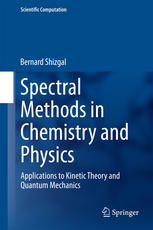

Most ebook files are in PDF format, so you can easily read them using various software such as Foxit Reader or directly on the Google Chrome browser.
Some ebook files are released by publishers in other formats such as .awz, .mobi, .epub, .fb2, etc. You may need to install specific software to read these formats on mobile/PC, such as Calibre.
Please read the tutorial at this link: https://ebookbell.com/faq
We offer FREE conversion to the popular formats you request; however, this may take some time. Therefore, right after payment, please email us, and we will try to provide the service as quickly as possible.
For some exceptional file formats or broken links (if any), please refrain from opening any disputes. Instead, email us first, and we will try to assist within a maximum of 6 hours.
EbookBell Team

4.3
18 reviewsThis book is a pedagogical presentation of the application of spectral and pseudospectral methods to kinetic theory and quantum mechanics. There are additional applications to astrophysics, engineering, biology and many other fields. The main objective of this book is to provide the basic concepts to enable the use of spectral and pseudospectral methods to solve problems in diverse fields of interest and to a wide audience. While spectral methods are generally based on Fourier Series or Chebychev polynomials, non-classical polynomials and associated quadratures are used for many of the applications presented in the book. Fourier series methods are summarized with a discussion of the resolution of the Gibbs phenomenon. Classical and non-classical quadratures are used for the evaluation of integrals in reaction dynamics including nuclear fusion, radial integrals in density functional theory, in elastic scattering theory and other applications. The subject matter includes the calculation of transport coefficients in gases and other gas dynamical problems based on spectral and pseudospectral solutions of the Boltzmann equation. Radiative transfer in astrophysics and atmospheric science, and applications to space physics are discussed. The relaxation of initial non-equilibrium distributions to equilibrium for several different systems is studied with the Boltzmann and Fokker-Planck equations.
The eigenvalue spectra of the linear operators in the Boltzmann, Fokker-Planck and Schrödinger equations are studied with spectral and pseudospectral methods based on non-classical orthogonal polynomials.
The numerical methods referred to as the Discrete Ordinate Method, Differential Quadrature, the Quadrature Discretization Method, the Discrete Variable Representation, the Lagrange Mesh Method, and others are discussed and compared.
MATLAB codes are provided for most of the numerical results reported in the book - see Link under 'Additional Information' on the the right-hand column.